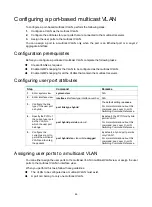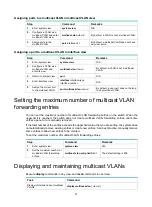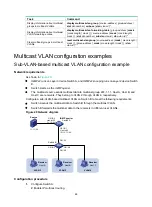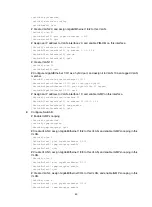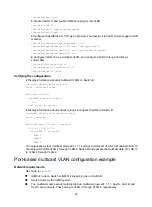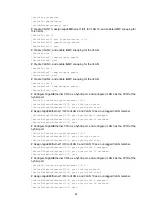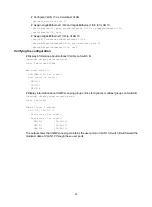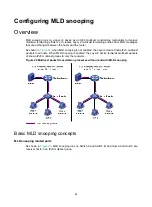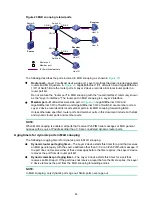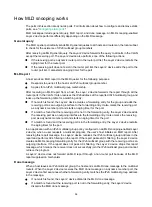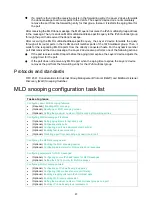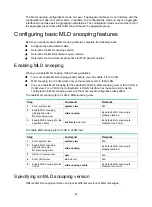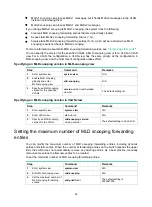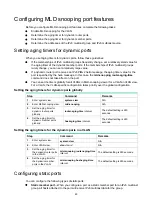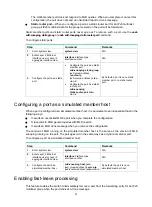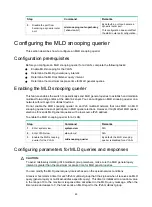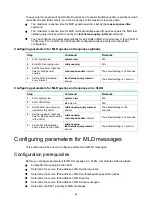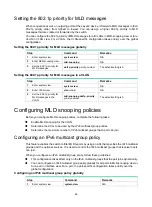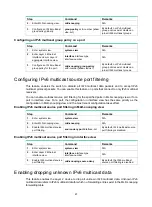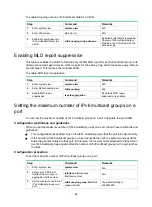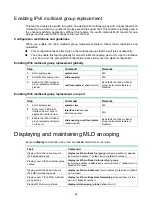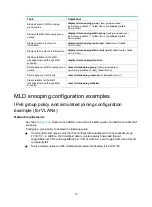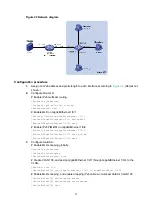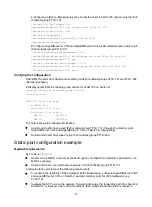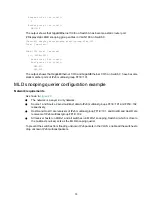
60
Configuring MLD snooping port features
Before you configure MLD snooping port features, complete the following tasks:
•
Enable MLD snooping for the VLAN.
•
Determine the aging timer for dynamic router ports.
•
Determine the aging timer for dynamic member ports.
•
Determine the addresses of the IPv6 multicast group and IPv6 multicast source.
Setting aging timers for dynamic ports
When you set aging timers for dynamic ports, follow these guidelines:
•
If the memberships of IPv6 multicast groups frequently change, set a relatively small value for
the aging timer of the dynamic member ports. If the memberships of IPv6 multicast groups
rarely change, you can set a relatively large value.
•
If a dynamic router port receives an IPv6 PIMv2 hello message, the aging timer value for the
port is specified by the hello message. In this case, the
mld-snooping router-aging-time
command does not take effect on the port.
•
You can set the timers globally for all VLANs in MLD-snooping view or for a VLAN in VLAN view.
For a VLAN, the VLAN-specific configuration takes priority over the global configuration.
Setting the aging timers for dynamic ports globally
Step Command
Remarks
1.
Enter system view.
system-view
N/A
2.
Enter MLD-snooping view.
mld-snooping
N/A
3.
Set the aging timer for
dynamic router ports
globally.
router-aging-time interval
The default setting is 260
seconds.
4.
Set the aging timer for
dynamic member ports
globally.
host-aging-time interval
The default setting is 260
seconds.
Setting the aging timers for the dynamic ports in a VLAN
Step Command
Remarks
1.
Enter system view.
system-view
N/A
2.
Enter VLAN view.
vlan vlan-id
N/A
3.
Set the aging timer for
the dynamic router ports
in the VLAN.
mld-snooping router-aging-time
interval
The default setting is 260 seconds.
4.
Set the aging timer for
the dynamic member
ports in the VLAN.
mld-snooping host-aging-time
interval
The default setting is 260 seconds.
Configuring static ports
You can configure the following types of static ports:
•
Static member port
—When you configure a port as a static member port for an IPv6 multicast
group, all hosts attached to the port will receive IPv6 multicast data for the group.

